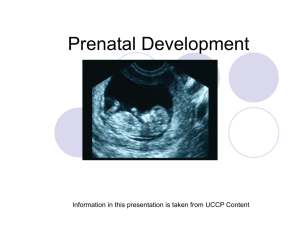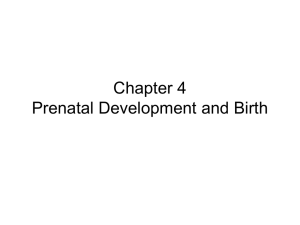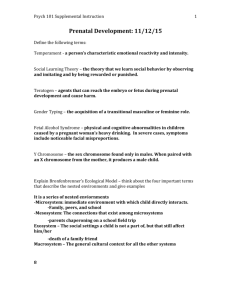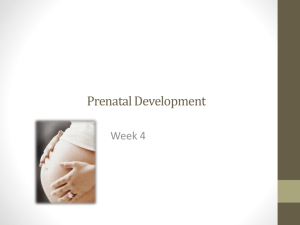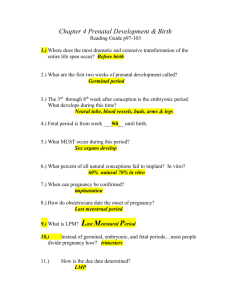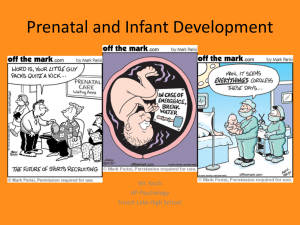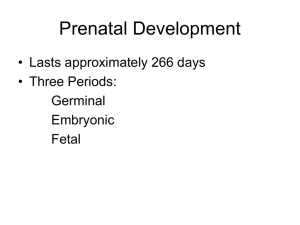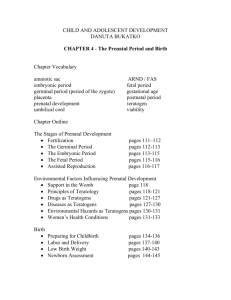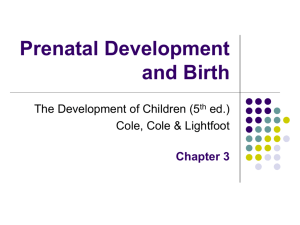Guide to Lesson 1
advertisement
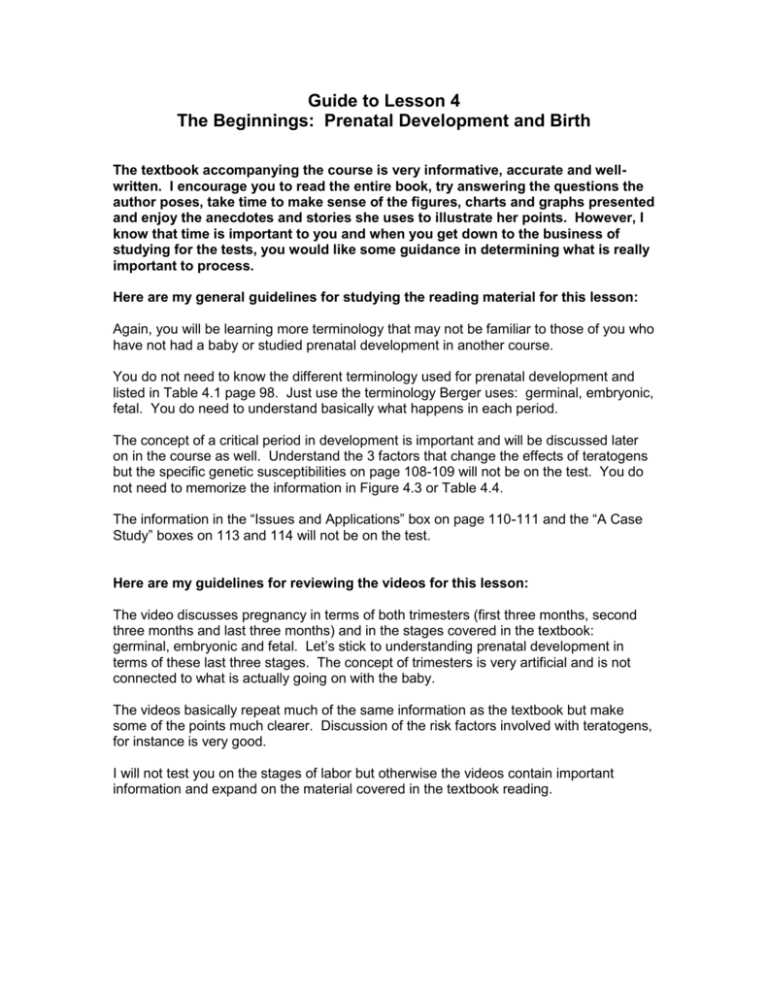
Guide to Lesson 4 The Beginnings: Prenatal Development and Birth The textbook accompanying the course is very informative, accurate and wellwritten. I encourage you to read the entire book, try answering the questions the author poses, take time to make sense of the figures, charts and graphs presented and enjoy the anecdotes and stories she uses to illustrate her points. However, I know that time is important to you and when you get down to the business of studying for the tests, you would like some guidance in determining what is really important to process. Here are my general guidelines for studying the reading material for this lesson: Again, you will be learning more terminology that may not be familiar to those of you who have not had a baby or studied prenatal development in another course. You do not need to know the different terminology used for prenatal development and listed in Table 4.1 page 98. Just use the terminology Berger uses: germinal, embryonic, fetal. You do need to understand basically what happens in each period. The concept of a critical period in development is important and will be discussed later on in the course as well. Understand the 3 factors that change the effects of teratogens but the specific genetic susceptibilities on page 108-109 will not be on the test. You do not need to memorize the information in Figure 4.3 or Table 4.4. The information in the “Issues and Applications” box on page 110-111 and the “A Case Study” boxes on 113 and 114 will not be on the test. Here are my guidelines for reviewing the videos for this lesson: The video discusses pregnancy in terms of both trimesters (first three months, second three months and last three months) and in the stages covered in the textbook: germinal, embryonic and fetal. Let’s stick to understanding prenatal development in terms of these last three stages. The concept of trimesters is very artificial and is not connected to what is actually going on with the baby. The videos basically repeat much of the same information as the textbook but make some of the points much clearer. Discussion of the risk factors involved with teratogens, for instance is very good. I will not test you on the stages of labor but otherwise the videos contain important information and expand on the material covered in the textbook reading.
